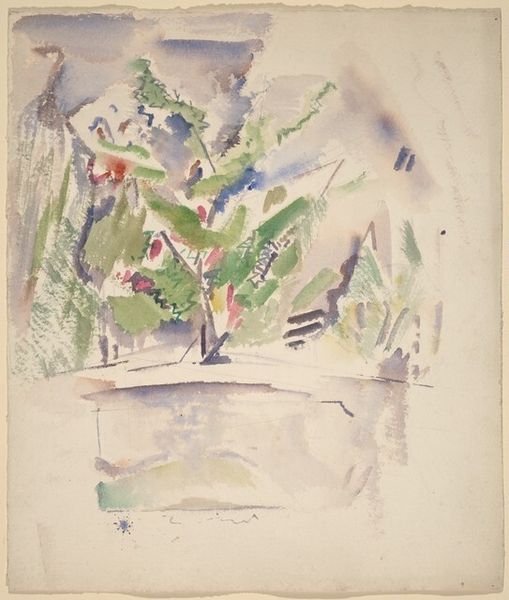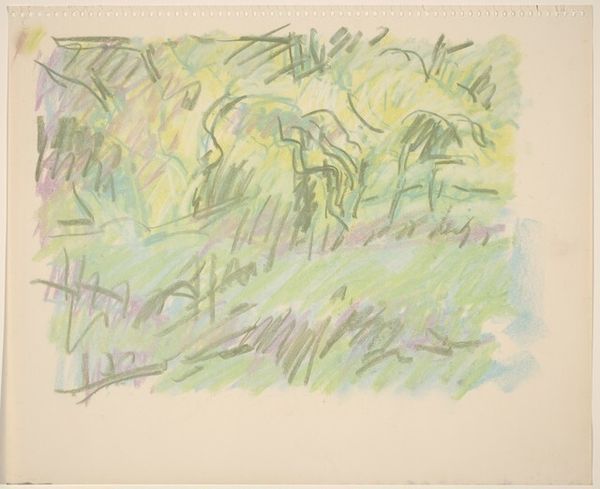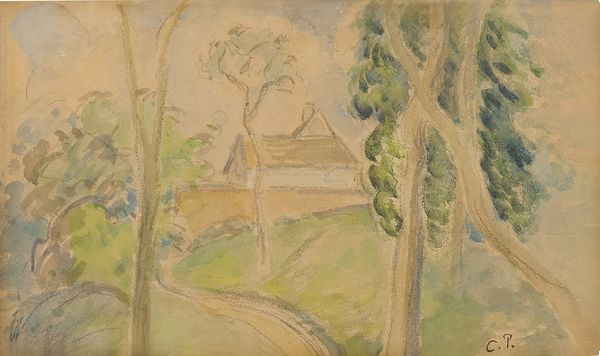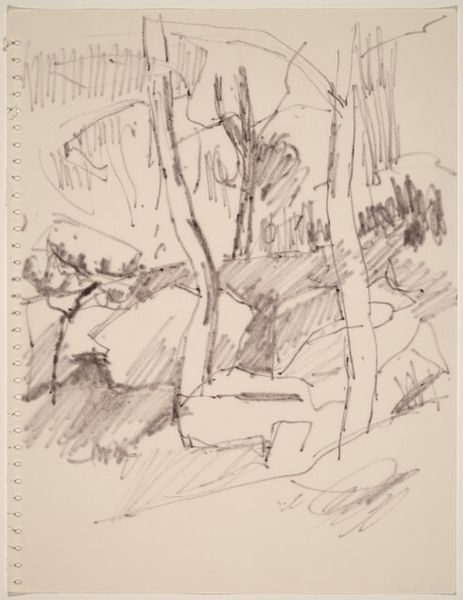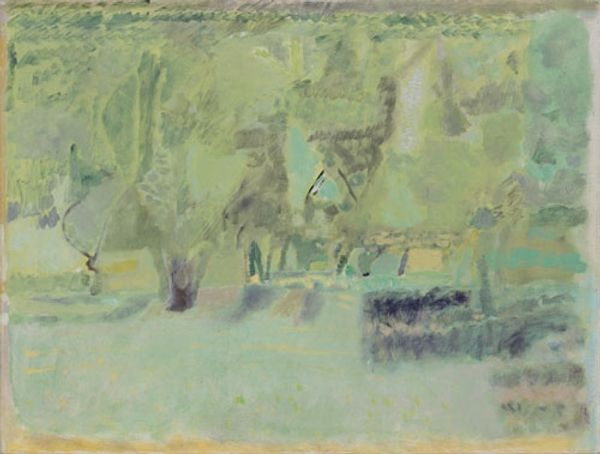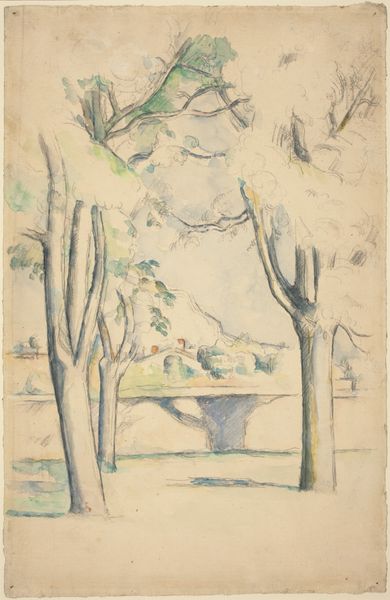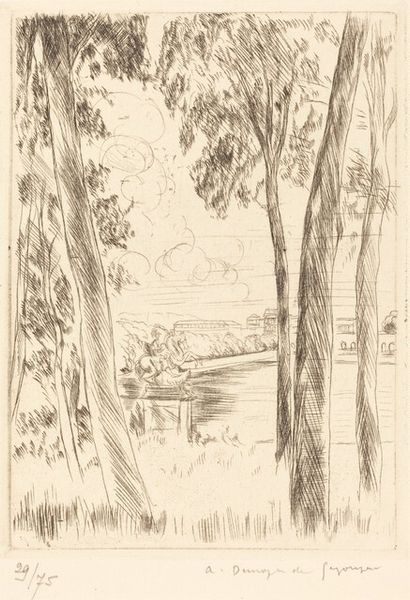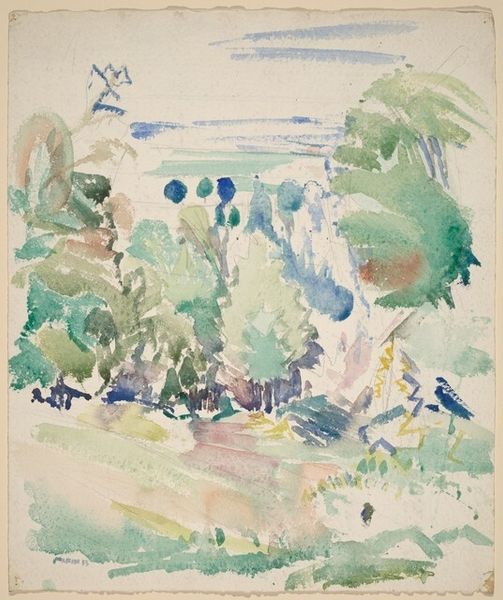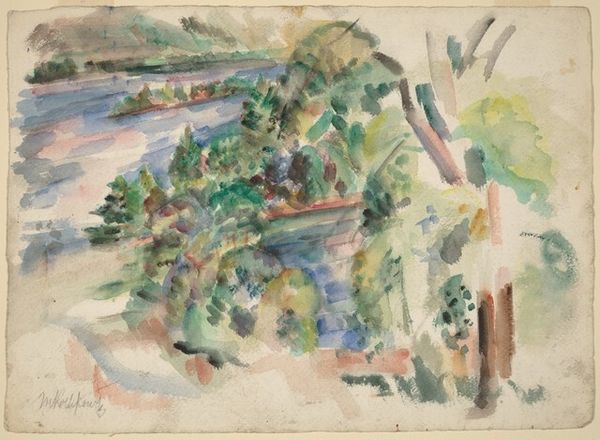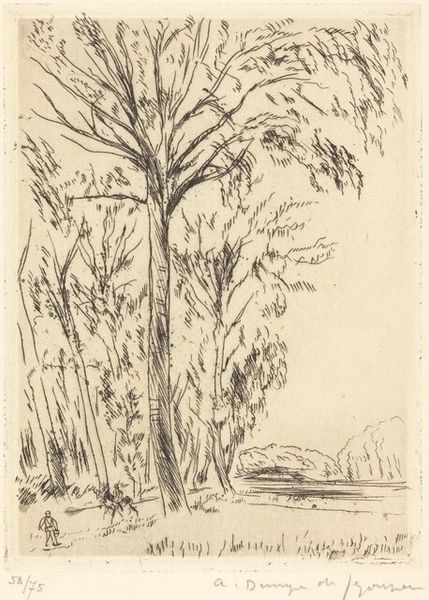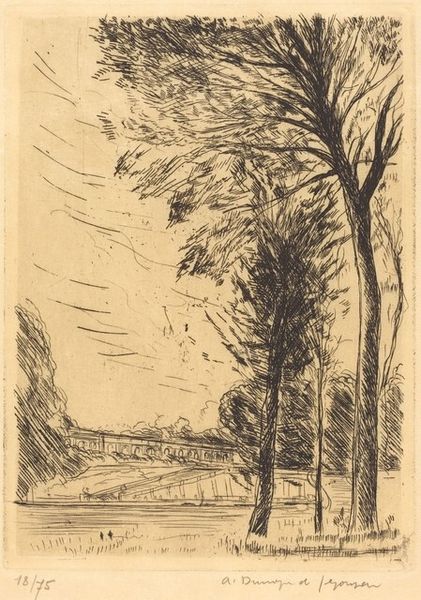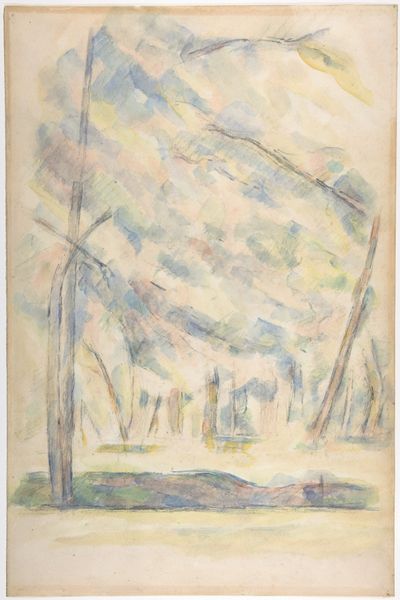
Copyright: Public Domain: Artvee
Curator: Let’s consider Jacek Malczewski's "Motif from Lusławice," a pastel and pencil drawing dating back to 1918. The scene depicts a landscape, seemingly rendered with gentle, almost hesitant strokes. Editor: My first impression is one of quietude, almost melancholy. The soft pastels create a muted atmosphere. There's something subtly unsettling about it, like a memory fading at the edges. Curator: I'm drawn to the use of color—or rather, the understated use of it. Notice how the blues, greens, and reds are not saturated but feel diluted, as if veiled in mist. This could mirror a nostalgic longing for the idyllic Polish countryside during a turbulent historical period. Editor: Precisely. 1918 was the end of World War I, a time of profound upheaval and re-drawing of borders, including Poland's. This "Motif," then, becomes more than just a pretty picture; it embodies a yearning for stability, for a sense of rootedness amidst societal collapse. Curator: Yes, and Lusławice held a particular resonance for Malczewski. It's more than a location; it’s a locus of personal symbolism. This landscape recalls a past but with a fragile rendering of space that almost dissolves as you look closer, making tangible something profoundly felt and only partially recalled. The half-formed impressions have an almost dreamlike quality. Editor: And the presence of the structure, possibly a rural home, anchors the work in reality. It could symbolize survival, endurance, and perhaps even a desire to rebuild after the devastation. However, its sketch-like appearance could indicate its ultimate fragility. The pencil rendering makes it appear vulnerable and insubstantial against the landscape itself. Curator: You’ve identified what may have originally sparked my own thinking. The landscape around the structural form is dense and looming—the home is overshadowed. This juxtaposition could mirror the imbalance that many felt during the rise of nationalist identity in Polish history; a search for "home," when the grounds upon which it was to be built was unstable. Editor: Indeed. By focusing on such a seemingly simple scene, Malczewski compels us to consider what 'home' truly means when all else is in flux. This delicate study gives so much pause for reflection. Curator: An evocative sketch of a moment suspended in time, pregnant with layers of historical and personal significance. Editor: I appreciate how its fragility prompts us to think about the delicate nature of memory, and the persistence of longing even in times of upheaval.
Comments
No comments
Be the first to comment and join the conversation on the ultimate creative platform.
